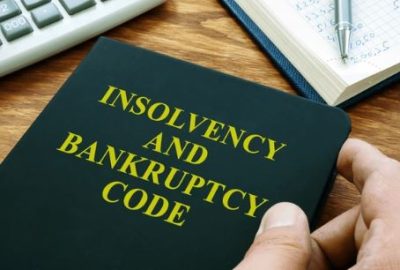- AI
- Arbitration
- Asia
- Automobile
- Bangladesh
- Banking
- Biodiversity
- Biological Inventions
- bLAWgathon
- Brand Valuation
- Business
- Celebrity Rights
- Company Act
- Company Law
- Competition Law
- Constitutional Law
- Consumer Law
- Consumer Protection Authority
- Copyright
- Copyright Infringement
- Copyright Litigation
- Corporate Law
- Counterfeiting
- Covid
- Design
- Digital Media
- Digital Right Management
- Dispute
- Educational Conferences/ Seminar
- Environment Law Practice
- ESIC Act
- EX-Parte
- Farmer Right
- Fashion Law
- FDI
- FERs
- Foreign filing license
- Foreign Law
- Gaming Industry
- GDPR
- Geographical Indication (GI)
- GIg Economy
- Hi Tech Patent Commercialisation
- Hi Tech Patent Litigation
- IBC
- India
- Indonesia
- Intellectual Property
- Intellectual Property Protection
- IP Commercialization
- IP Licensing
- IP Litigation
- IP Practice in India
- IPAB
- IPAB Decisions
- IT Act
- IVF technique
- Judiciary
- Khadi Industries
- labour Law
- Legal Case
- Legal Issues
- Lex Causae
- Licensing
- Live-in relationships
- Lok Sabha Bill
- Marriage Act
- Maternity Benefit Act
- Media & Entertainment Law
- Mediation Act
- Member of Parliament
- Mergers & Acquisition
- Myanmar
- NCLT
- NEPAL
- News & Updates
- Non-Disclosure Agreement
- Online Gaming
- Patent Act
- Patent Commercialisation
- Patent Fess
- Patent Filing
- patent infringement
- Patent Licensing
- Patent Litigation
- Patent Marketing
- Patent Opposition
- Patent Rule Amendment
- Patents
- Personality rights
- pharma
- Pharma- biotech- Patent Commercialisation
- Pharma/Biotech Patent Litigations
- Pollution
- Posh Act
- Protection of SMEs
- RERA
- Section 3(D)
- Signapore
- Social Media
- Sports Law
- Stamp Duty
- Stock Exchange
- Surrogacy in India
- TAX
- Technology
- Telecom Law
- Telecommunications
- Thailand
- Trademark
- Trademark Infringement
- Trademark Litigation
- Traditional Knowledge
- UAE
- Uncategorized
- USPTO
- Vietnam
- WIPO
INTRODUCTION
India’s corporate environment was dramatically altered following the enactment of Insolvency and Bankruptcy Code (IBC) in 2016. This landmark legislation has ushered in a new era of responsibility, efficiency and transparency within the areas of corporate restructuring along with bankruptcy resolution. The IBC is a paradigm shift from the older fragmented and protracted legal structure because it embodies a comprehensive and time-bound response to financial distress.
- Introduction to the Insolvency and Bankruptcy Code (IBC)
- The Indian bankruptcy resolution procedure is intended to be streamlined and consolidated under the IBC.
- A systematic and fixed duration for management of corporate bankruptcy is provided by this process.
- The process keeps the concerns and issues of various parties that have a stake on equal footing. (like borrowers, lenders etc.)

- Key Pillars of the IBC
- The Committee of Creditors (CoC) and its authority to deliver and oversee decisions.
- Insolvency Resolution Professionals (IRPs) and (Resolution Professionals (RPs).
- National Company Law Tribunal (NCLT) and National Company Law Appellate Tribunal (NCLAT).
- Schedules and formal specifications for the resolution procedure.
- Corporate Insolvency Resolution Process (CIRP)
- CIRP is started by operational or financial creditors.
- Designating a professional Interim Resolution (IRP).
- The CoC’s creation and approval of the resolution plan.
- Execution of the authorized resolution strategy.
- Landmark Judgements and the Effects of these Verdicts
- Operational Creditors’ Rights and Proceeds Distribution in the Essar Steel Case
- The Jaypee Infrastructure Case: The Financial Creditor Status of Homebuyers.
- The Bhushan Power and Steel Case: The Decision of the Court of Claims is Final.
- Challenges and the Way Forward
- Potential solutions and delays in the resolving process.
- In difficult cases, balancing the interests of stakeholders.
- Infrastructure development and capacity building for successful implementation.
CONCLUSION
In our discussions above, we have established IBC’s persistence and its adaptability during all the hurdles and setbacks in the process of resolution. These setbacks can be overpowered by being proactive in taking measures such as creating capacities and having an attitude of cooperation among all stakeholders as the progression of the Code ensues.
The IBC in near future can revolutionise India’s corporate environment to a significant degree by harnessing and fostering a tradition of accountable lending and borrowing. The code has the ability to promote all round financial stability of the economy. Also, if the cases related to bankruptcy can be resolved successfully, we may be able to unlock assets of value and we can ensure proper and fair redistribution on terms which are beneficial for all, thus stimulating rapid economic growth.
The Insolvency and Bankruptcy Code (IBC) holds the key for India which is still battling intricacies related to global financial markets. The IBC signifies and stands for the idea that stable legal fundamentals are the basis of all economic judgements. India can successfully build a robust and dynamic ecosystem for businesses which will be capable of pulling lucrative investments, as well as creating a mighty model for sustainable economic progress if the principles of IBC are followed.
Author: Zoya Javeriya Khan, a student at KIIT School of Law, Bhubaneswar, in case of any queries please contact/write back to us via email to chhavi@khuranaandkhurana.com or at Khurana & Khurana, Advocates and IP Attorney.
REFERENCES
- getdocument (mca.gov.in)
- https://nclt.gov.in/
- Microsoft Word – 190528_UnderstandingtheIBC.docx (vidhilegalpolicy.in)
- Summary-of-Supreme-Court-Judgements-on-IBC.pdf (vinodkothari.com)
- Explained | The Insolvency and Bankruptcy Code (IBC)- where does it stand today? – The Hindu



